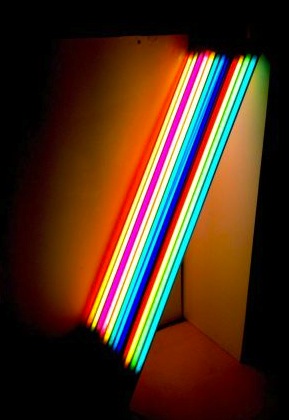On one of my previous blog posts I spoke about how I have used materials from old work to make new work. This week I am still playing with the 6 LED Light Sheets sourced from my old work Repeated Everyday.
In the past couple of days I have been layering coloured acetate’s on top of the light sheets to make new light drawings (images here). I have been excited about the results and think that the use of transparencies works well within my practice and within my research into luminosity.
Today I decided to use the notion of reusing elements within old works to use within new experiments. I pulled open my plan-chest draw to find 10’s of works on paper that I had made last year as part of my Arts Council England Grants for the Arts Research and Development funding which I was awarded.
There were some works that I never showed as they didn’t quite work. They didn’t work because the colours were too flat or sordid or there wasn’t enough white space around the image; basically the image I had created didn’t jump off the page, like the successful ones did.
I felt this was a shame, but didn’t bin them. I don’t keep everything, but I kept these sheets. There was elements within them that I liked, but they weren’t 100%. Now I know why…
They totally lacked luminous colour!
I was attempting to use bright hues, but the colours didn’t sing.
One by one, I laid the works on paper onto my LED light sheets and photographed them. I felt a sense of excitement when a few of them started taking on a new lease of life. The light source offered the colours a voice: they were singing!
The colours were at last, vivid in their hue, saturate and glowing; they has become luminous. Of course not all pieces did this; especially the ones where I had applied colour on top of black or collage. The blackness blocked any saturation the colour could muster altogether.
In some of the more successful ones, shown below, the use of the black separates the colour, as a line in a drawing or a wall within a space. I believe that this is how these works should be shown. I feel they are finished.
Such a simple change makes all the difference. Lifting them from out of my draws, out of their dullness, and into becoming possibilities. I see all my works on paper as possibilities: potential for how they could be taken into three dimensions and how they might one day occupy space.


















